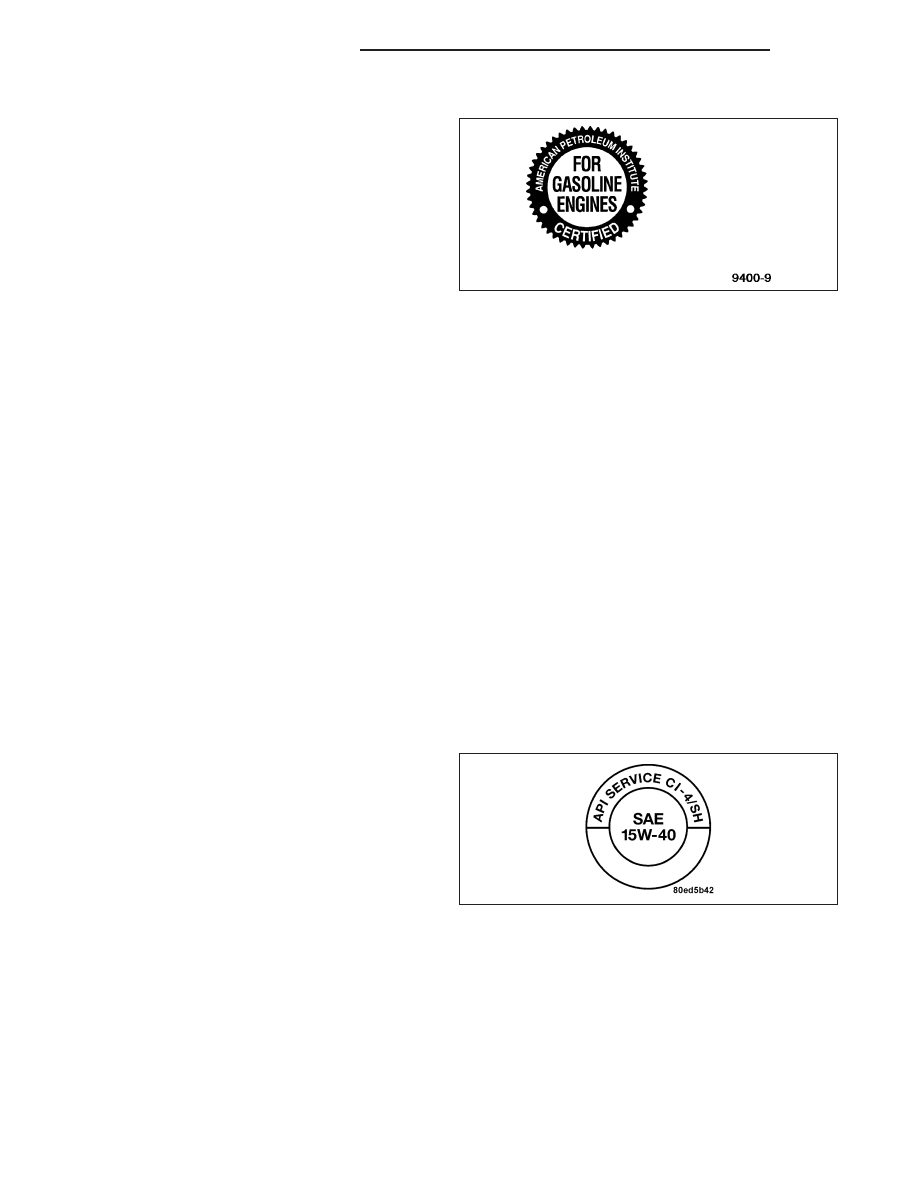Dodge Ram Truck 1500-2500-3500. Manual - part 5

CONTAINER IDENTIFICATION
Standard engine oil identification notations have been
adopted to aid in the proper selection of engine oil.
The identifying notations are located on the front label
of engine oil plastic bottles and the top of engine oil
cans.
This symbol means that the oil has been certified by
the American
Petroleum
Institute
(API).
Diamler-
Chrysler only recommend API Certified engine oils.
Use Mopar
T
engine oil or equivalent.
FUEL REQUIREMENTS - DIESEL ENGINE
WARNING: Do not use alcohol or gasoline as a fuel blending agent. They can be unstable under certain
conditions and hazardous or explosive when mixed with diesel fuel.
Use good quality diesel fuel from a reputable supplier in your Dodge truck. For most year-round service, number 2
diesel fuel meeting ASTM specification D-975 will provide good performance. If the vehicle is exposed to extreme
cold (below 0°F/-18°C), or is required to operate at colder-than-normal conditions for prolonged periods, use clima-
tized No. 2 diesel fuel or dilute the No. 2 diesel fuel with 50% No. 1 diesel fuel. This will provide better protection
from fuel gelling or wax-plugging of the fuel filters.
Diesel fuel is seldom completely free of water. To prevent fuel system trouble, including fuel line freezing in winter,
drain the accumulated water from the fuel/water separator using the fuel/water separator drain provided. If you buy
good-quality fuel and follow the cold-weather advice above, fuel conditioners should not be required in your vehicle.
If available in your area, a high cetane “premium” diesel fuel may offer improved cold starting and warm-up perfor-
mance.
ENGINE OIL - DIESEL ENGINES
Use only Diesel Engine Oil meeting standard MIL-2104C or API Classification CD or higher or CCML D4, D5.
SAE VISCOSITY GRADE
CAUTION: Low viscosity oils must have the proper API quality or the CCMC G5 designation.
To assure of properly formulated engine oils, it is rec-
ommended that SAE Grade 10W-40 engine oils that
meet Chrysler material standard MS-6395, be used in
accordance to ACEA B3, B4 specification. European
Grade 10W-40 oils that meet Association des Con-
structeurs Européens d’ Automobiles (European Auto-
mobile
Manufacturers
Association)
(ACEA)
specifications, are also acceptable.
Oils of the SAE 5W-40 grade number are preferred
when minimum temperatures consistently fall below -15°C.
0 - 4
LUBRICATION & MAINTENANCE
DR/DH